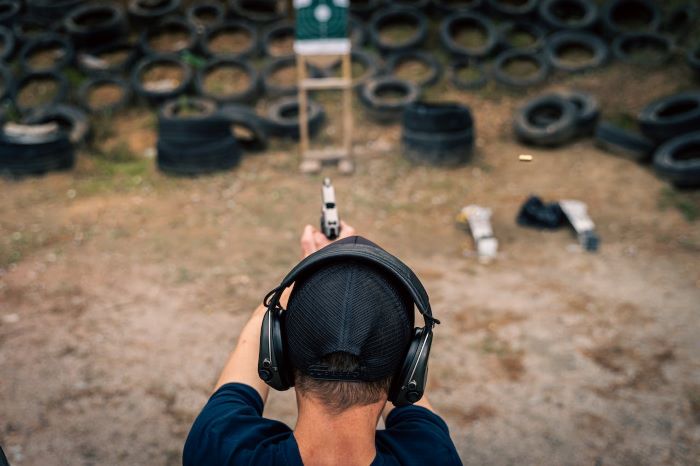Selecting a self-defense firearm is a significant decision that demands careful consideration. It involves understanding the critical aspects that make a firearm suitable for personal protection. Here, we aim to provide a comprehensive guide that will assist individuals in making informed choices when selecting a self-defense firearm.
1. Understanding Your Needs and Legal Requirements
Before diving into the technicalities, it’s crucial to assess your needs and understand the legal requirements in your area. Different states and countries have varying laws regarding firearm ownership and usage. Ensure you are well-informed about the legalities, including ownership, carry permits, and self-defense laws.
2. Size and Concealability
The size of the firearm is a key factor, especially if you plan to carry it regularly. A compact or subcompact handgun is easier to conceal and more comfortable for everyday carry. However, smaller guns can be more challenging to shoot accurately and may have a smaller ammunition capacity. An example of a compact and affordable option for self-defense is the Hi Point 9mm Carbine, which offers a balance between size and firepower.
3. Caliber and Stopping Power
Caliber is a critical consideration in choosing a self-defense firearm. Common self-defense calibers include .380 ACP, 9mm, .40 S&W, and .45 ACP. The debate over caliber often revolves around stopping power versus recoil management. A larger caliber typically offers more stopping power but also comes with increased recoil, which can affect shooting accuracy and speed, especially for less experienced shooters.
4. Reliability
Reliability is non-negotiable in a self-defense firearm. You need a gun that will function flawlessly under stress. Research the track record of different models and brands, read reviews, and talk to experienced firearm owners. Consider firearms that are known for their durability and consistent performance.
5. Capacity
Magazine capacity is another important aspect. Higher capacity allows for more rounds to be fired before needing to reload, which can be crucial in a self-defense situation. However, higher capacity often means a larger firearm, which can affect concealability.
6. Ergonomics and Comfort
A firearm should feel comfortable in your hand. The grip, weight, and balance of the gun are important. A gun that feels awkward or uncomfortable is less likely to be used effectively. Visit a gun store or shooting range to handle various models and find one that fits your hand well.
7. Ease of Use
For self-defense, particularly for those new to firearms, ease of use is essential. Complicated mechanisms and controls can be a liability in a high-stress situation. A firearm with simple operation, clear safety features, and an intuitive design is preferable.
8. Trigger Quality
The quality of the trigger can significantly affect shooting accuracy. A smooth, consistent trigger pull helps in maintaining accuracy under stress. Test different firearms to find a trigger that feels right for you.
9. Sights
Good sights are crucial for accurate shooting. Many self-defense firearms come with enhanced sights for better visibility, especially in low-light conditions. Consider models with high-quality, easy-to-use sights, or plan to upgrade the sights on your chosen firearm.
10. Accessories and Customization
Consider the availability of accessories and customization options for your firearm. Options like tactical lights, laser sights, and grip enhancements can improve the functionality of your firearm. However, it’s important not to over-customize in a way that affects reliability.
11. Training and Practice
Owning a self-defense firearm comes with the responsibility of regular training and practice. No matter which firearm you choose, proficiency is key. Invest in training courses, practice regularly, and familiarize yourself with your firearm’s particular characteristics and handling.
12. Cost
Finally, consider the cost of the firearm and the ongoing expenses such as ammunition, accessories, and training. While it’s important not to compromise on quality and reliability, find a firearm that fits your budget.
Conclusion:
Choosing a self-defense firearm is a deeply personal decision that should be made with thorough research and consideration. Evaluate the factors of size, caliber, reliability, capacity, ergonomics, ease of use, trigger quality, sights, accessories, training requirements, and cost. Remember that a firearm is a tool for self-defense, and its effectiveness depends greatly on the skill and responsibility of the user. Stay informed, train regularly, and always prioritize safety in your decision-making process.

